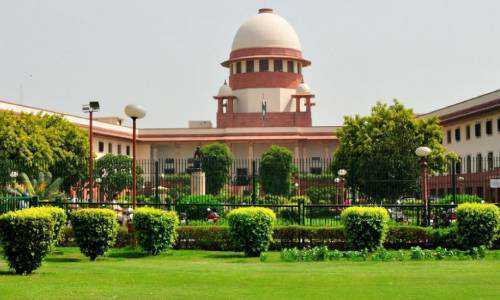
The lawsuit stipulates that the Reserve Bank of India's Circular RBI/2017 18/131.DBR.No.BP.BC.101/21.04.048/2017-18, dated February 12, 2018, was the basis for the extra vires action taken on its behalf. The Banking Regulation (Amendment) Act of 2017's Section was violated by the Circular. Numerous petitioners, including the Association of Power Producers, disputed the circular (APP). The Government was also a party to the case, thus the Hon'ble Supreme Court of India was asked to rule on it in a transferred petition.
According to the ruling, the RBI relied on Section 35AA only for a specific reason, and if it were to be applied to any circumstance rather than a particular phrase and without the Central Government's permission, it would violate the law. The power already granted by the code should be implemented through the development of a new, focused regulatory framework by RBI.
In the instant case titled Dharani Sugars and Chemicals Ltd. v. Union of India and Ors. The issue raised for clarification before the Supreme Court was:
Whether section 35AA of the Banking Regulation (Amendment) Act, 2017 is constitutionally legitimate and whether the RBI's February 12 Circular on stressed assets was ultra-vires?
With regard to this issue, the Honorable Supreme Court noted that the modified provisions are identical in quality to all of the sections already granted and give the RBI regulatory authority to control its duties under the act. The RBI has the authority under section 35A to make sure that the banking businesses receive the required guidance in the public interest. Such temporary empowerment cannot be seen as arbitrary. In light of this, information about the RBI's use of its authority and such guidance may be found in the statement of purposes, as well as in sections 22, 25, 29, 30, and 31 of the code.
According to sections 35AA and 35AB, this use of power is constitutionally acceptable. Later, the Supreme Court noted that Section 35AA permits the central government to give the RBI permission to provide directives on a "Default" by authorising such permission. A default would entail not making any payments on debts. Both banking institutions and non-banking institutions are covered by the contested circular. It was decided that the aforementioned contested order is currently supra vires and has no bearing on the law. As a result, all directives and actions issued in accordance with the above mentioned circular must do so.
Due to the way the circular operated, debtors were no longer subject to financial creditors' actions under section 7 of the law.
The Court categorically stated that,
"A cursory reading of Section 35A makes it clear that there is nothing in the aforesaid provision which would indicate that the power of the RBI to give directions, when it comes to the Insolvency Code, cannot be so given. The width of the language used in the provision which only uses general words such as ‘public interest’ and ‘banking policy’ etc. makes it clear that if otherwise available, we cannot interdict the use of Section 35A as a source of power for the impugned RBI circular on the ground that the Insolvency Code, 2016 could not be said to have been in the contemplation of Parliament in 1956, when Section 35A was enacted."
Following the ruling, RBI issued a press statement announcing that it would promptly implement a revamped and updated regulatory framework for the preparation and resolution of stressed assets that would be in conformity with the Dharana Sugars ruling and the prevailing law rules. According to the ruling, the RBI relied on Section 35AA only for a specific reason, and if it were to be applied to any circumstance rather than a particular phrase and without the central government's permission, it would violate the law. The power already granted by the code should be implemented through the development of a new, focused regulatory framework by RBI.

